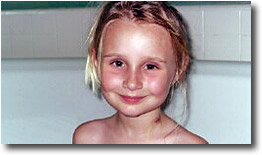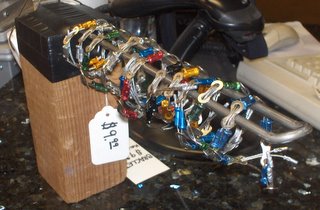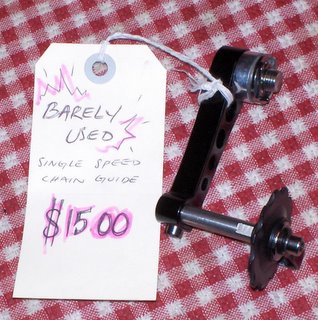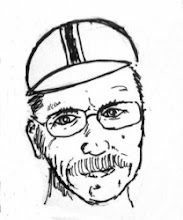or other long distance cycling events, you will sometimes see the letters DNF listed next to a name instead of a finishing time. DNF stands for Did Not Finish. Patrick Gray is collecting DNF stories for an article he's writing for the
newsletter and most randonneurs have at least one DNF story. I've never actually quit a randonneuring event, but I did quit one cycling event once,
's S2S.
S2S is a bicycle race, a time trial from Seattle to Spokane along Highway 2. The distance is 284 miles and each year in late June or early July a few people meet up in the early morning hours and race into the darkness from Seattle, out past the farms near Snohomish and Monroe, up into the Cascade mountains, heading toward the rising sun, climbing up and over the 4061' Stevens Pass, down through the rumbling confines of the Tumwater Canyon, through the faux-Bavarian town of Leavenworth, into the blasting heat and wind of the Wenatchee River Valley and then down into the Columbia Gorge. Here the road turns north and the cyclists follow, cutting east again, up at the hot and steep Orondo Grade. Most pause at the oasis of a town called Waterville before heading out into the relentlessly rolling dry farmland and into the desolation that is the Moses Coulee, Sulfur Canyon and the Grand Coulee. Coulee City is another place to pause before hammering home the final 92 miles. This is a race that few enter and fewer finish. It is not the kind of race you should enter for the wrong reason. It's the kind of race where you race against the course, the conditions and the clock. It's the kind of race that even if you race it for a stupid reason, you will be sure to learn something.
Back in 2000 a fellow named Kent Peterson raced S2S on a fixed gear and established a fixed gear course record. Such a thing is easy to do when no one else has thought to do such a thing. In 2003, I got the stupid idea in my head that I could beat Kent Peterson, at least I could beat the 2000 version of Kent Peterson. After all, I reasoned, I'm now a few years more experienced. By definition anything he could do, I could do.
The race starts in the wee hours of the morning and among my fellow riders I see my friend Will Roberts. Will is British, so riding fixed to him comes as naturally as dining on eels and mash. This is good, I'll not just be competing against myself, Will is here to make it interesting.
It's a cool morning and we spin into the darkness. In fact it's really too cool of a morning. For some reason, I'm just not hitting my stride. Normally, I settle quickly into a rhythm, not fast or slow but just something that seems right. The mechanical actions of riding just drop away and it's all an automatic thing, like breathing. Rain, cold, heat, hills or whatever are just part of the ride. I'm aware of all these things, but they don't bother me. Today, for some reason, isn't like that.
First, I'm too cold. Then I think I'm too slow. Then I'm pushing too hard. The climb up Steven's Pass feels steeper than it should. Maybe one of my brakes is dragging? I stop and check. My brakes are not dragging. Maybe one of my tires is low? It isn't. I remount my bike and climb up the pass.
Some of the ride is better. The descent through the Tumwater canyon is always beautiful. It's warm on the east side of the mountains but things soon move from warm to hot. Somehow the climb up Orondo Grade is easier than I'd remembered it and when I reach Waterville I'm not really too far off schedule. But something is seriously wrong.
I have a mechanism in my brain that works like an internal jukebox. While some would say I wasted too much of my youth listening to rock and roll and blues, I'd say that I was conditioning my brain. And the singer Meatloaf has noted that "a wasted youth is better by far than a wise and productive old age." I don't need an iPod, I've got an iBrain filled with decades of songs and when I feel like I'm starting to drag, I can call up something with the right rhythm to keep those pedals turning and the bike rolling on down the road.
As I roll out of Waterville, I mentally punch up some Springsteen. The Boss has never let me down and this is the time for a little "Born to Run" or maybe "No Retreat, No Surrender". But that's not what comes up on the play list. Oh no. Here, on a hot road in eastern Washington I hear the mournful strum of a guitar and these haunting words -- "I ain't nothin' but tired, I'm just tired and bored with myself..."
Damn! I try to force my mental play list forward but the malfunction is serious. Upbeat songs won't play and what does come up is all small repeating fragments of depression. Tom Petty opines that "it just seems so useless to have to work so hard and nothing ever seems to come from it."
The sun is beating down as I climb out of Sulfur Canyon. It's easily 100 degrees now and for some reason America has stopped by on a Horse with No Name to tell me that "the heat is hot." Thanks a lot guys, I think I could've figured that out on my own.
As I roll into Coulee City I convince myself that I should quit. Will is somewhere out ahead and my younger self is out there as well. It's very hot. I've convinced myself I'm burning up in the sun. More importantly, this thought is rolling through my head: I've never quit. I always say I'm out here to experience new things. Well, this is a race I've done before, but I've never quit one before. I should quit. I feel like hell and it's stupid to be out here. I'm tired of being that guys who people look at and say "yeah, he's crazy. He never stops..."
Well, I ain't nothin' but tired, I'm just tired and bored with myself...
I'm hoping to find some way to quit in Coulee City but there really isn't anything there. I stop at a park and refill my water bottles and down the road I stop at a gas station and buy a Snickers ice cream bar. The cold ice cream doesn't really do much to revive my spirit but as I eye the pay phone I realize I don't even know who I'd call. My internal iPod kicks out a line of poetry "only mad dogs and Englishmen go out in the mid-day sun" Will is the Englishman, so I know what that makes me. I guess I'll have to ride this damn thing in.
A few miles east of Coulee City my pal Duane drives by in a jeep. Duane is the closest thing S2S has to a race director and today he's been riding his bike for a bit in the Waterville area and also driving along the course to check on riders. He waves as he goes by and I wave back.
If he'd driven on, I really think I would've ridden on. I was not feeling better but I was feeling more resigned to my stupidity. But Duane pulls the jeep over to the side of the road and as I roll up beside him he asks "are you OK?"
I look at him with a look that makes it certain that he won't question me on this and I reply "I'm OK now, 'cause I'm done."
Duane's bike is on the rear rack of the jeep and we load my bike next to it. It isn't dramatic or emotional or really anything at all. It is just over and that's what it needs to be right now.
As we drive down the hot road toward Spokane, Duane fills me in on the other riders. More are behind me than I'd thought but the fast folks are up ahead. We pass some of them as we head to Spokane but the really fast people are already done. We yell out encouraging things to those still doing battle with the road.
We don't see Will on the road and I figure this means that he'd set the new record. But when I see him at the motel, he tells me the story.
"Too bloody hot! My legs were cramping and I just couldn't spin those damn pedals anymore. I flagged down some guys in a truck and they took me here."
We tell ourselves that we did the right thing and at this moment, we still believe it. And I think I really did have to quit to learn this one very simple thing.
Quitting is easy. It's incredibly easy. If you are honest with yourself, you'll see that yes, you feel like hell. Yes, it's really hot and yes, this is really stupid. Whover said failure is not an option was a liar. Failure is always an option and it's often an attactive option.
It's the next day and the next and all the days after that when the second part of the truth sets in. The part that I was really out there to learn.
Quitting is easy, but being a quitter is hard.
I could have kept going. I should have kept going. I could still turn those pedals even when the song in my head was telling me that the heat was hot and that I was nothing but tired. I could have lied and said I was fine when Duane asked if I was OK.
Of course, I wasn't OK. But I should have gone on, not to win but to finish. That would have been a victory. But I was beaten because I forgot who I was. I raced against myself but I didn't measure up. I told myself that I was being honest and being smart. The truth of the matter, the truth I needed to learn, was that I don't race against people. I'm not who I am because I win, I'm who I am because I ride. And when I stop riding, that is when I'm not being my honest self. My honest self would lie even when I know I'm lying, say I'm OK when I know I'm not and then ride down the road to the only place that can turn the lie of the moment into the truth it has to be in the end.
It's hard to lie when the truth of the moment is as hard and real as a Jeep idling on the side of a sun-baked road. It's a hard thing to do but it's not as hard as being a quitter.
I gave the easy answer of the moment and it felt fine at the time. But as each hour passes I feel worse and worse. I replay the day over and over and I feel worse and worse. I might have been tired of being Kent Peterson, but dammit, I am Kent Peterson.
Will and I both learned our hard lessons and it didn't take us long to get back on our bikes. Six weeks later I raced and won the first (and so far only)
Raid Californie-Oregon. In 2004, Will came back to S2S and established the current fixed gear record of 19 hours 22 minutes, eclipsing my old record by 33 minutes.
We all encounter failures and setbacks as we travel our various paths. With luck and persistence those dark moments can be converted into the fuel to keep us going, riding through the darkness to a bright place just a bit further down the road.





























